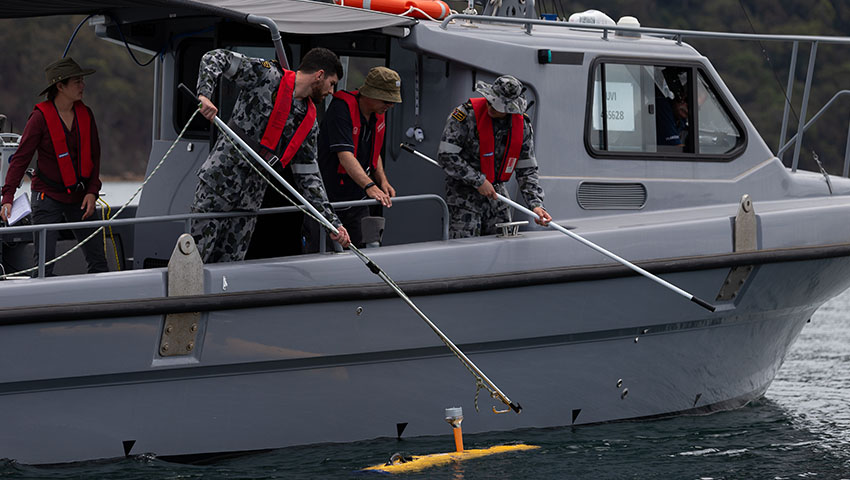Marine technology company Sonardyne has announced that its Solstice multi-aperture sonar has been integrated into mine warfare command software used by the Royal Australian Navy.
Through a collaboration with Australian defence software engineering company Solutions from Silicon (SfS), data collected by Solstice during mine countermeasure (MCM) missions can now be imported, processed and displayed in the most recent release of the MINTACS (Mine Warfare Tactical Command Software), which is in service with the RAN.
Sonardyne’s Solstice is widely considered a force multiplier for MCM operations, enabling substantially higher area coverage rates (ACR) using low-cost, low-logistics autonomous underwater vehicles (AUVs).
Ioseba Tena, global business manager – defence and robotics at Sonardyne, said, "At Sonardyne we are really proud to be supporting SfS and their efforts to provide additional capability to the Royal Australian Navy."
It provides 200-metre-wide swath with an unrivalled 0.15-degree along-track resolution and consumes just 18 Watts, maximising vehicle endurance.
Solstice is now fitted, as standard, to General Dynamics Mission Systems’ Bluefin-9 and Bluefin-12 unmanned underwater vehicles (UUVs). Seven Bluefin-9 and Bluefin-12s will join the RAN’s UUV fleet this year under its SEA 1778 program.
They will be based at HMAS Waterhen in Sydney and will search for, classify and identify sea mines.
Russell Norman, technical director at SfS, explained, "Naval Mine Warfare is currently experiencing a major generational change that once complete will see unmanned and autonomous systems take on virtually all aspects of a traditional crewed mine hunter, including detection, classification, identification and neutralisation.
"With the significantly increased sonar ranges provided by Solstice, compared with traditional side-scan sonar, the goal of achieving the required area coverage rates is one step closer."
MINTACS provides the operator with the ability to not only read and display the Solstice data but also mark mine-like objects (MLOs) of interest and process the images with its powerful onboard automatic target recognition (ATR) capability.
"We’re confident that, with Solstice data now within the MINTACS database, the Royal Australian Navy will see tangible gains as part of its ongoing expansion of its deployable mine countermeasures capability in the maritime domain," Tena added.
MINTACS is in service with host of countries around the world including the national navies of the UK, Australia, Malaysia, United Arab Emirates, New Zealand and Sweden.
Founded in 1971, Sonardyne aims to improve the safety and efficiency of underwater navigation for divers through innovation in acoustic signal processing, hardware design and custom engineering.


